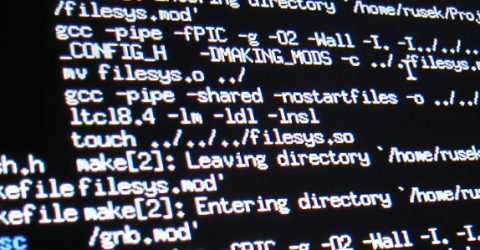What should I know about Linux?

In the beginning, there was Windows. And it was good.
Admittedly, it wasn’t good enough to impress Steve Jobs, who in 1984 unveiled the Apple Macintosh with its graphical user interface and incompatible operating system.
More recently, we’ve seen Google wade into the operating system wars with its streamlined web-based Chrome OS – ideal for laptops where speed and battery life are vital aspects.
Yet many readers might be surprised to know Chrome OS wasn’t the third major operating system to grace the global desktop computer market.
That honour belongs to Linux – a variation of the clunky and limited UNIX operating system popular among academic institutions in the 1980s.
It might not be a household name, but Linux has gradually spread into numerous aspects of our lives.
It forms the basis of the Android operating system, underpins the cPanel content management system, and is used by web servers on every continent.
It’s also part of the iconic LAMP software stack, which is used to develop software applications and host online content.
So where did this cornerstone of today’s digital world originate?
A third way
In 1991, University of Helsinki student Linus Torvalds developed an operating system based on UNIX, resolving many of the issues that frustrated his classmates and peers about UNIX.
Few people noticed when Linux 1.0 was unveiled in 1994, but version 2.0 swiftly caught the imagination of IT managers by supporting several devices simultaneously.
The rapid expansion of networking and the fledgling internet provided fertile territory for this quirky text-based OS to flourish, as concerns grew about Microsoft’s dominance.
That was the same anti-corporate ethos which saw Apple’s market share steadily increase throughout the 1990s.
There was little competition between the two alternatives, though. Apple’s products appealed to IT novices and creatives, whereas Linux was favoured by boffins and programmers.
Millennium big
In 2000, the Linux Foundation was established, promoting this operating system as a viable alternative to Windows and macOS.
This was also a period when Linux began splitting into competing factions – all subtly different yet retaining the same architecture, and attracting brand-loyal advocates.
A corporate analogy could be drawn with the Volkswagen Group. Many of the same components are used in VWs, Audis, Skodas and Seats.
Yet an Audi driver might not be willing to buy a Skoda, while a Seat owner may regard his marque as more exotic and sporting than the rather anodyne VW brand.
So it is with Linux distributions, better known as distros.
There’s the corporate CentOS and its community-powered arch-rival Debian. There’s Linus Torvalds’ preferred Fedora distro, and the uniquely flexible Gentoo.
Same difference
Irrespective of which distro you prefer, several common elements remain:
- There are no costs involved. Buying a licence to use Windows or macOS tends to be expensive, whereas Linux is free to download
- It’s very flexible. By removing the restrictions applied to other operating systems, Linux users are able to build unique applications and bespoke desktop environments
- It’s customisable. Linux is open source, with no restrictions on modifying its program code. Technically-minded users can adapt and revise it to their heart’s content
- There’s a strong community. Each distro has an enthusiastic army of amateur online advocates, solving technical problems and suggesting new concepts or modifications
- User interfaces are dynamic. Desktop environments like KDE and GNOME are stunning to look at, simple to use and easier to customise than Windows, Chrome or macOS.






